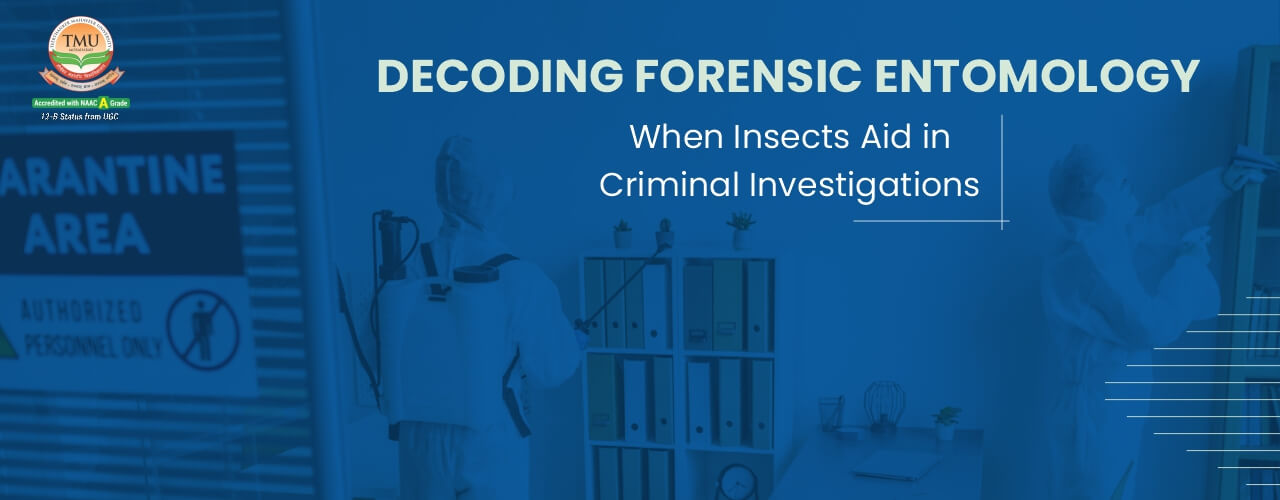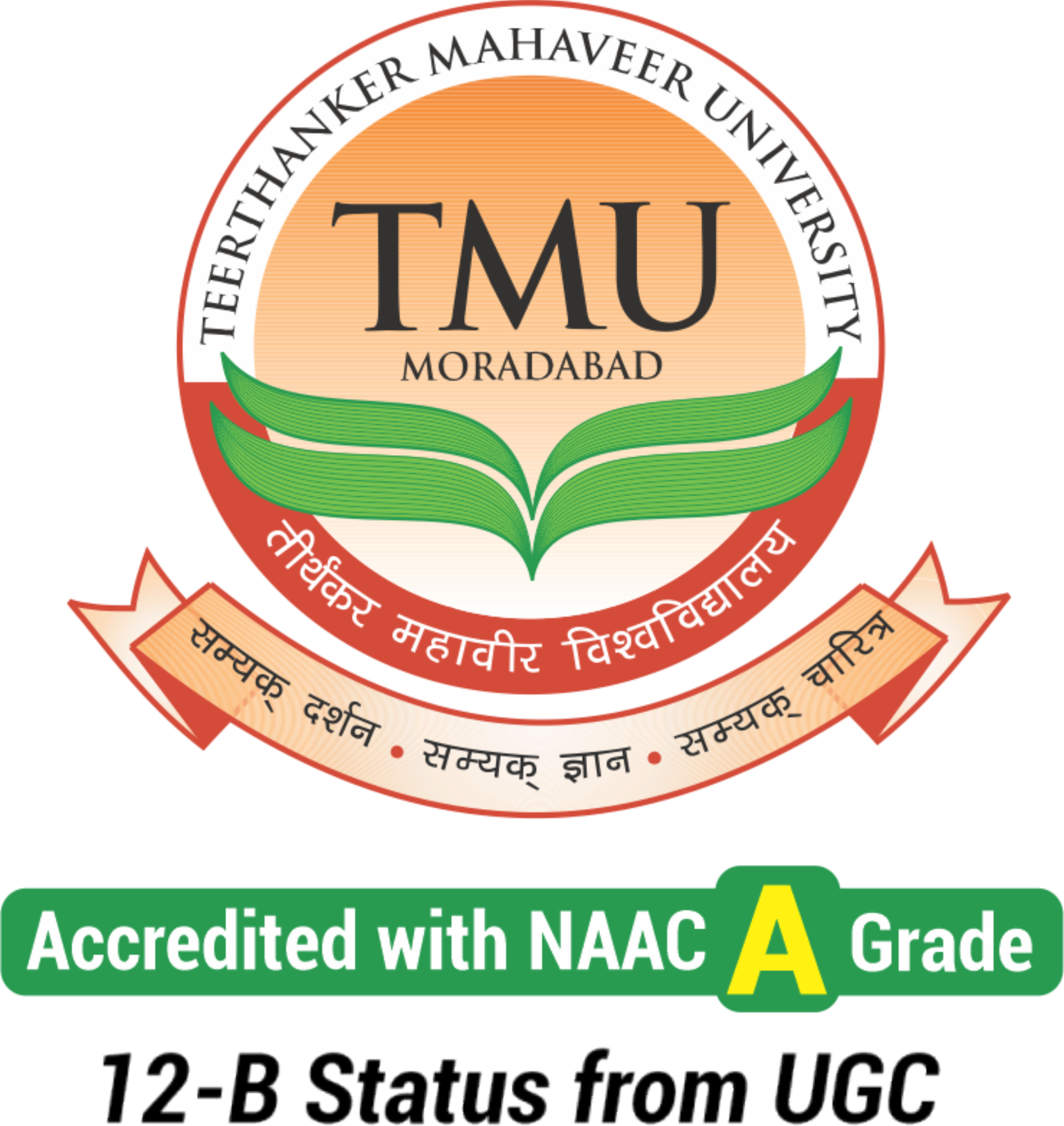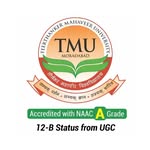Decoding Forensic Entomology: When Insects Aid in Criminal Investigations
Table of Contents
Has demystifying the criminal cues ever sparked your interest? Or has the idea of getting to the core of the crime scene to dig to find the truth ever intrigued you? Well, in the world of criminal investigations, detectives and forensic experts often rely on various scientific techniques to unravel mysteries. Among these, forensic entomology stands out as a unique and crucial field where insects become silent witnesses to crimes. This branch of science delves into how insects and arthropods play a pivotal role in criminal investigations. Forensic entomology is one of the subsets of forensic science that a B.Sc. in Forensic Science offers. Let's delve into knowing this facet of forensic investigation.
Forensic Science and Insects: Entomological Evidence
Forensic entomology is the application of studying insects and other arthropods in criminal cases. The interplay between forensic science and insects might seem obscure at first glance, but these tiny creatures hold secrets that can be groundbreaking in solving cases. When a body starts to decompose, it sends signals in the form of chemical compounds, attracting various insects, particularly blowflies, which are often the first to arrive on the scene.From the moment of death, a biological clock starts ticking. Cells begin to die, and the body undergoes autolysis, where enzymes digest cells from the inside out. As the body decomposes, it produces gases and liquids like hydrogen sulfide, carbon dioxide, and methane. These volatile substances, known as apeneumones, are the beacon that guides insects to the decomposing remains.
Insects, especially blowflies, are sensitive to these decomposition odors, often arriving within hours after death. The larvae, or maggots that these insects lay on the body, undergo various developmental stages. By studying these stages and the insect population present, forensic scientists can estimate the post-mortem index — the time elapsed since death.
Teerthanker Mahaveer University
Apply for Admission
Click Here To Apply for Admission
Beyond the Time of Death
Forensic entomology offers more than just a timeline. It can indicate whether a body has been moved after death, hint at the cause of death, and even associate suspects with the crime scene. Changes in the insect population can reflect alterations in the corpse's location, providing detectives with crucial information.The most critical insect in forensic entomology is the blowfly, known for its quick response to corpse decay odors. Scientists have meticulously studied its lifecycle, and by identifying the developmental stage of blowfly larvae, they can provide accurate information about the approximate time of death.
Research has shown that sulfur-based compounds attract flies to decomposing remains, with ammonium-rich compounds inducing egg-laying. By isolating these chemicals at different decomposition stages, experts can understand and even predict insect behavior.
From Homicides to Antiques
The applications of forensic entomology extend beyond homicides. In court, a forensic entomologist might be asked to determine whether woodworms or a drill caused holes in antique furniture. The presence of insects in stored cannabis can reveal whether it was tampered with in its country of origin or only in the destination country.The Silent Witnesses
Research has shown that sulfur-based compounds attract flies to decomposing remains, with ammonium-rich compounds inducing egg-laying. By isolating these chemicals at different decomposition stages, experts can understand and even predict insect behavior.The most critical insect in forensic entomology is the blowfly, known for its quick response to corpse decay odors. Scientists have meticulously studied its lifecycle, and by identifying the developmental stage of blowfly larvae, they can provide accurate information about the approximate time of death.
Carrion Beetle Behaviour and Forensic Tracking
The carrion beetle, Oxelytrum discicolle, from the order Coleoptera, has risen to significant forensic prominence in cases involving violent deaths. As the decomposition process advances, these beetles, particularly their larvae, feed exclusively on the decaying tissues, providing crucial insights into the timeline of death. In a landmark forensic case in Brasília, Brazil, this beetle garnered recognition for estimating the minimum post-mortem interval (m-PMI) of a corpse, showcasing its utility in forensic investigations. The adult O. discicolle beetles are omnivorous scavengers that occasionally prey on fly larvae and feed on decaying animal substrates. Immature forms are predominantly scavengers.Their preference for moist environments, such as seasonal forests and urban areas, and their increased attraction to carcasses in advanced stages of decomposition make them pivotal in determining the timeline of colonization and, hence, the time of death. This case study underscores the growing recognition of beetles in forensic entomology, placing carrion beetles like O. discicolle alongside other beetles traditionally referenced in the forensic literature. Their role in estimating PMI, especially in the Neotropical region, is becoming increasingly indispensable.
Forensic Taphonomy and Crime Scene Analysis
Forensic taphonomy is a specialized discipline within medicolegal investigations that focuses on understanding the post-mortem changes a body undergoes when exposed to various environmental elements, particularly in outdoor settings. It emphasizes the interplay of natural agents such as flora, fauna, soil chemistry, and environmental conditions on the deceased, which can influence the evidence and its interpretation.When a death occurs outdoors, the scene presents a complex web of interactions. Unlike indoor crime scenes, where evidence can be more controlled and preserved, the outdoors exposes evidence to myriad factors, making its recovery and interpretation challenging. This is where the principles of forensic archaeology come into play, offering protocols to handle evidence from large-scale outdoor scenes, scattered remains, buried bodies, fatal fires, and even mass disasters.
The key to successful forensic taphonomic investigations lies in two main protocols. First, it's crucial to document the scene's context comprehensively. This involves detailing its specific location, analyzing local plant and animal life, and understanding geological, geographic, and environmental conditions that might impact the evidence. Secondly, it's imperative to note the spatial distribution of evidence meticulously. This allows investigators to determine how different pieces of evidence relate to each other and the incident in question.
By amalgamating the data acquired from the scene with lab analyses of biological tissues, forensic taphonomy offers a robust framework to form and test hypotheses about the events following death and deposition. Such insights can lead to informed scientific estimates about the post-mortem interval, shed light on whether the remains were altered, moved, or removed, and discern any signs of human intervention in the disposition of the body.
Forensic entomology may seem like a chapter from a science fiction novel, but it is a profound testament to the interconnectedness of life and death. Insects, often overlooked in daily life, become crucial players in pursuing justice. This field is not just about understanding death; it's about revealing truths, solving mysteries, and, ultimately, serving justice through the silent whispers of nature's tiniest detectives. Hence, a M.Sc. or B.Sc. in Forensic Science is often interlaced with forensic entomology as a subject.















